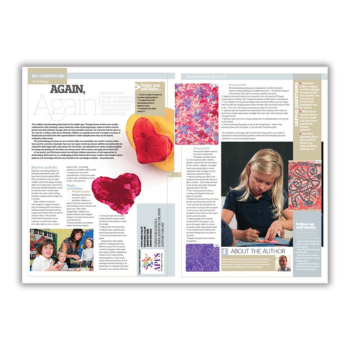Repetition isn’t always a creative cul de sac, as this repeated pattern art lesson plan demonstrates…
Learning objectives
- Use a range of resources to make repeat patterns
- Experiment with developing prints in different ways
- Extend your ideas using technology
Repeated pattern art
Children can quickly learn how to employ a number of simple print processes that offer opportunities to create multiple prints that they can share, swap or give away.
The printmaking processes we use in school today are essentially very similar to those artists have used for centuries. Basically, there are two types of print processes: additive and subtractive (or reductive).
Both begin with a flat surface. For the former, you add texture to create a surface suitable for inking and printing. For the latter you remove parts of the surface and apply ink to what’s left.
In this project you’ll find some ideas that will give children experience of both approaches to printmaking. We’ll move on to a challenging activity that involves some creative and complex repeat patterns. However, we’ll begin with the most humble of art and design activities – the potato print.
Starter activity
Begin by reminding children of previous experiences they will have had of printmaking. With a little prompting, many younger children will recall using everyday objects to make prints. Even if it’s muddy footprints across the kitchen floor, the principle remains the same: printmaking involves making repeat images on a surface.
Encourage older children to suggest reasons why we make prints. What’s the value of making repeated images? Can they name any processes that we use to produce them?
They should understand that you can make prints on a small scale, using everyday objects, or on a much larger scale. Increasing numbers of children will be used to seeing their artworks reproduced on Christmas cards. In each case, repetition is at the centre of the process.
Robert Watts is the Programme Convener for the MA Art, Craft and Design Education course at the University of Roehampton, London. He is co-author of Teaching Art and Design 3-11, published by Continuum Books.











